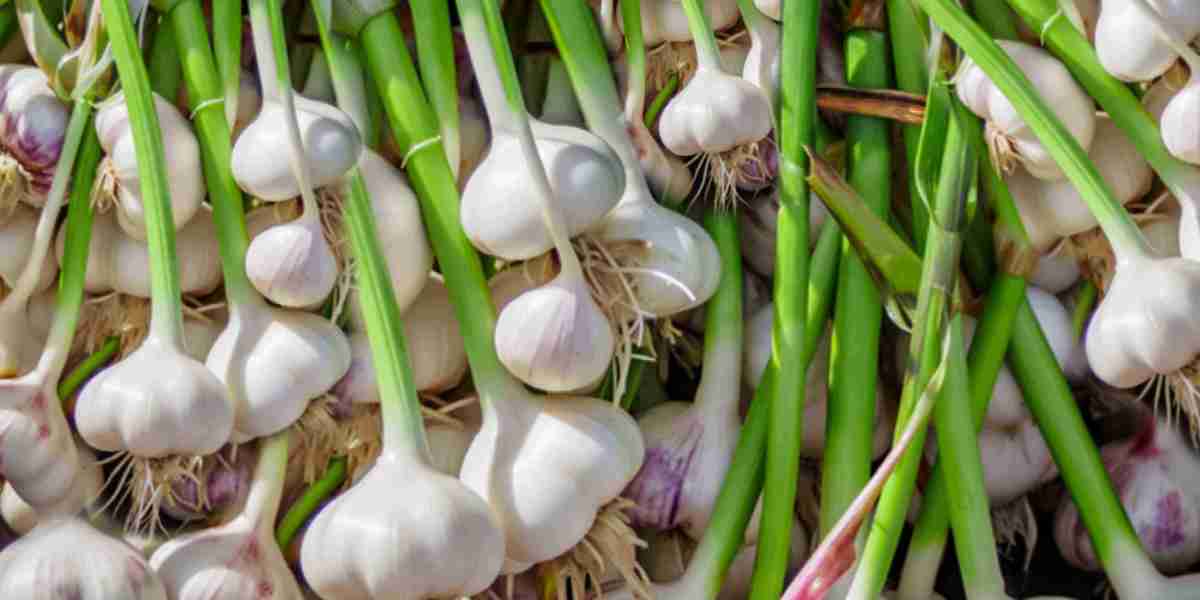In the realm of organic gardening, few crops offer the satisfaction and versatility found in garlic. Celebrated for both its culinary and medicinal attributes, organic garlic stands as a kitchen essential globally. Growing this flavorful bulb through organic methods not only guarantees a harvest free from chemicals but also promotes sustainability and eco-friendly approaches. Let's explore the fundamental steps for growing organic garlic and reap the rewards of a plentiful harvest.
1. Choosing the Right Garlic Variety:
Begin your organic garlic journey by selecting the right variety for your region. Softneck garlic varieties, such as 'Inchelium Red' or 'California Early,' are well-suited to milder climates, while hardneck varieties like 'German Extra Hardy' thrive in colder regions. Choose organic garlic bulbs or cloves from a reputable source to ensure the purity of your crop.
2. Preparing the Soil:
Organic garlic prefers well-drained, nutrient-rich soil. Start by preparing the planting bed in the fall, several weeks before planting. Incorporate compost or well-rotted manure to enhance soil fertility. Avoid planting garlic in areas prone to waterlogging, as excessive moisture can lead to rot.
3. Planting Organic Garlic:
Break apart the garlic bulb into individual cloves just before planting, ensuring each clove retains its papery outer skin. Plant the cloves with the pointed end facing upward, at a depth of approximately 2 inches. Space the cloves about 4 to 6 inches apart, allowing ample room for bulb development.
4. Mulching for Moisture and Weed Control:
After planting, apply a layer of organic mulch, such as straw or shredded leaves, to conserve moisture and suppress weed growth. Mulching helps maintain even soil moisture, insulate the garlic during winter, and prevent competing weeds that may hinder growth.
5. Watering:
Garlic prefers consistent moisture throughout its growing season, especially during the spring when the bulbs are actively developing. Water the plants regularly, aiming for around 1 inch of water per week. Be cautious not to overwater, as garlic bulbs may rot in excessively wet conditions.
6. Fertilizing Organically:
Organic garlic benefits from a balanced and slow-release fertilizer. Apply compost or well-decomposed manure in the fall during soil preparation. Additionally, side-dress with organic fertilizers, such as fish emulsion or seaweed extract, during the growing season to provide essential nutrients.
7. Scaping and Pruning:
Hardneck garlic varieties produce scapes, curly flower stalks that emerge from the center of the plant. While these scapes are edible and can be used in cooking, removing them redirects the plant's energy to bulb development. Snip off the scapes once they curl, usually a few weeks before harvest.
8. Harvesting Organic Garlic:
Knowing when to harvest is crucial for optimal flavor and storage. Harvest softneck varieties when the leaves begin to yellow and wither, usually in late spring or early summer. Hardneck varieties are ready a bit earlier. Dig up the bulbs carefully, avoiding damage to the papery skins.
9. Curing and Storing:
After harvesting, allow the garlic bulbs to cure in a dry, well-ventilated area for several weeks. This process helps the bulbs develop a protective outer layer and enhances their flavor. Once cured, store the garlic in a cool, dark place with good air circulation. Proper curing and storage contribute to extended shelf life and maintain the garlic's robust flavor.
10. Saving Seed Cloves:
Select the best bulbs from your harvest to save as seed garlic for the next planting season. Keep these bulbs separate from your culinary stock, and replant the cloves in the fall for a continuous cycle of organic garlic cultivation. Ideal for businesses and farmers committed to environmentally friendly practices, organic wholesale seeds enable the cultivation of nutritious, chemical-free crops.
Growing organic garlic is a rewarding endeavor that aligns with sustainable gardening practices. By following these steps, you can enjoy a bountiful harvest of flavorful and chemical-free garlic, enriching your culinary creations and contributing to a healthier, eco-friendly lifestyle. Embrace the art of growing organic garlic and savor the delicious fruits of your labor.



